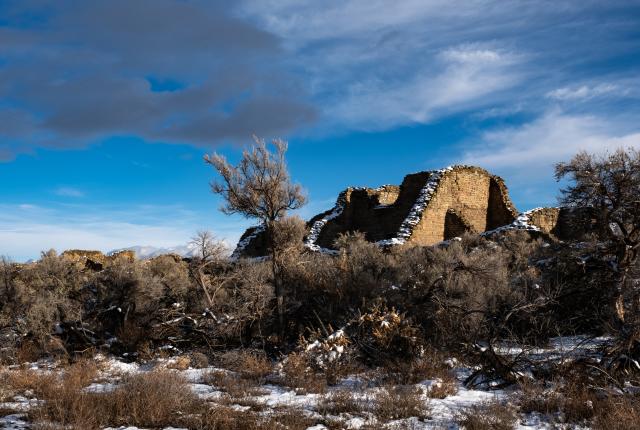850: First great houses built at Pueblo Bonito and Una Vida in Chaco Canyon.
1050: Chaco culture reaches its height.
1068–1072: First Chacoan structures built at what is now called Salmon Ruins.
1105: First Chacoan structures built at what is now called Aztec Ruins.
1120–1150: Chaco culture collapses; great houses still occupied by Puebloans.
1300s: Post-Chacoan tribes expand their presence in the Río Grande, Acoma, Laguna, Zuni, and Hopi regions.
1450: Archaeological evidence of Navajo and Apache people in the region.
1680: Earliest known defensive site built in the Dinétah.
1705: Spanish conquistador Roque Madrid leads a campaign to test the strength of Navajos accused of raiding pueblos.
1775: Dinétah region abandoned. Navajo people move west and south, including into Chaco Canyon, though not into existing structures.
1907: Chaco Culture National Monument established; later renamed Chaco Culture National Historical Park. Diné residents forced to move.
1923: Aztec Ruin National Monument established; later renamed Aztec Ruins National Monument.
1973: Salmon Ruins opens as a museum and heritage park, owned by the City of Bloomfield.
1987: Chaco Culture, as represented by Chaco Canyon and Aztec Ruins, declared a UNESCO World Heritage Site.



